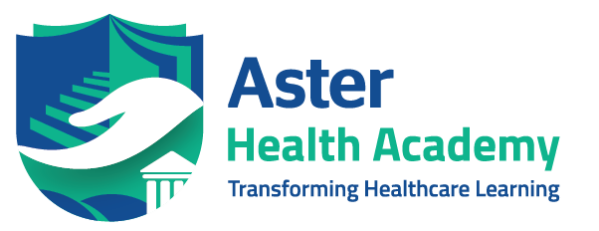As the healthcare landscape in India evolves rapidly, robotic-assisted surgery is emerging as one of the most transformative advancements. With specialized training programs now more accessible than ever – doctors are asking: is it worth specializing in robotic surgery in 2025?
- India’s Robotic Surgery Landscape in 2025
Market Growth & Accessibility
- India held 6% of the Asia-Pacific robotic surgery market in 2024, with a projected 10% CAGR through 2036.
- The Indian surgical robotics market is expected to surge from USD 851 million in 2023 to nearly USD 4 billion by 2031 Trade.gov.
- By 2025, India likely has over 100 robotic installations, supporting more than 800 trained robotic surgeons and around 12,800 procedures over the past decade Amit Sinha’s BlogPMC.
Expanding Reach in Public Healthcare
- Public institutions are embracing the technology:
- KGMU (Lucknow) launched affordable robotic surgery, even offering the first 200 procedures free under a PPP model.
- AIIMS-Raipur is inaugurating its first robotic surgery program focusing on complex specialties like urology and gynecology starting September 6, 2025.
- GMCH (Nagpur) is set to establish Maharashtra’s first government robotic organ transplant unit.
Source: The Times Of India.
Regional Momentum
- South India (Bengaluru, Chennai, Hyderabad) leads adoption, supported by hospitals like Apollo, Narayana, Fortis, and innovative startups.
- North India remains strong too, with Delhi-NCR accounting for a significant share of robotic surgeries and hospital infrastructure.
- Drivers Pushing the Trend Forward
- Cost-effective Indian robotic systems (e.g., SSI Mantra) are emerging at 50–60% lower price compared to imported giants, fueling adoption in Tier 2/3 cities.
- Medical tourism is capitalizing on India’s high-quality, low-cost robotic surgeries—bolstering investments in metro centers.
- Training initiatives are expanding rapidly; over 500 surgeons trained in 2024 alone, including simulation-based programs.
- Technological enhancements, such as AI integration, remote surgery (telerobotics), augmented reality, haptic feedback, and miniaturized single-port robots, are edging closer to mainstream practic.
- Challenges to Navigate
- High costs: Buying and maintaining systems like da Vinci can cost upwards of USD 1.5–2 million, with steep maintenance fees—barriers especially for smaller hospitals.
- Skilled workforce shortage: As of 2024, only around 1,000 trained surgeons are available against a demand for roughly 12,000 annual robotic procedures.
- Low awareness in smaller cities: 60% of patients in Tier 2/3 towns remain unaware of robotic options.
- Regulatory and reimbursement gaps: Many insurers do not yet cover robotic surgery, increasing out-of-pocket costs for patients.
- Infrastructure limitations: Unreliable power and internet connectivity hinder remote surgery implementation in some areas.
- Aster Health Academy & GHA’s Training Tracks – Centered on Da Vinci and Intuitive Systems
Globally, Intuitive Surgical’s Da Vinci platform remains the gold standard in robotic-assisted surgery. With more than 7,500 Da Vinci systems installed worldwide and a dominant presence in India’s robotic surgery landscape, surgeons who train on this system are positioning themselves at the very forefront of modern healthcare.
Recognizing this, Aster Health Academy, in collaboration with Global Healthcare Academy (GHA), has designed its intensive training programs around specialties where Da Vinci systems are most impactful—uro-oncology, gynecology, head & neck, and GI surgery. By providing exposure to Intuitive’s advanced robotic consoles, trainees gain hands-on experience with the very technology that is redefining minimally invasive surgery in India.
Why this matters:
- Urology and gynecology are the two largest use cases for Da Vinci in India, making these Aster–GHA programs directly aligned with market demand.
- Oncology and head & neck surgery are expanding fields where precision, tremor reduction, and minimally invasive approaches offered by Intuitive’s system bring clear clinical advantages.
- Training on Da Vinci prepares surgeons for immediate employability in India’s top private hospitals, many of which have already invested in Intuitive’s platforms.
By focusing on Intuitive’s robotic ecosystem, Aster–GHA ensures its graduates are not just skilled in theory but ready to operate on the most widely used surgical robot in India and the world—a clear differentiator from generic robotic surgery fellowships.
Should You Specialize in 2025?
-
Hands-on Da Vinci Training
-
Direct console exposure with the Da Vinci system — not just observation. Surgeons actually practice instrumentation, setup, and workflow.
-
-
Specialty-Focused Modules
-
Covers real surgical use cases in Head & Neck, GI, Gynaecology, and Urology — making the learning directly applicable to high-demand fields.
-
-
Faculty-Led by India’s Leading Robotic Experts
-
Training conducted by practicing robotic surgeons with years of OR experience, so you get insights that go beyond textbooks.
-
-
Hospital-Based Live Learning
-
Conducted in partnership with accredited, high-volume hospitals — giving you exposure to actual OR environments and cases.
-
-
Accelerated Career Edge
-
Adds a premium skill to your surgical practice, opening doors to robotic surgery departments across India and abroad.
-
-
Structured & Intensive Format
-
Unlike short observerships, this program compresses hands-on training into an intensive format, ensuring skill retention and faster upskilling.
-
-
Networking & Recognition
-
Train alongside peers and mentors, build your professional network, and earn certification backed by a recognized healthcare brand.
-
Final Thoughts
Specializing in robotic surgery in 2025 India is a forward-looking move with the potential for immense clinical and professional reward. As the market grows and technologies modernize, the surgeons trained today will define the next era of surgical innovation.
However, success will depend on:
-
-
The quality of training (hands-on vs. observership)
-
The infrastructure at your hospital or institution
-
Staying current with regulations, reimbursements, and evolving tech
-
Building awareness among patients and peers to drive adoption
At Aster Health Academy (AHA), we bridge these gaps by offering:
-
Hands-on Da Vinci console training (not just simulations)
-
Specialty-focused modules in Head & Neck, GI, Gynaecology, and Urology
-
Live hospital-based learning at accredited, high-volume centers
-
Mentorship from leading robotic surgeons with proven OR expertise
-
Certification and recognition that strengthen your clinical credibility
-
If you’re seeking to shape healthcare’s future with cutting-edge surgical precision, now may be the defining moment to commit to robotic surgery.

